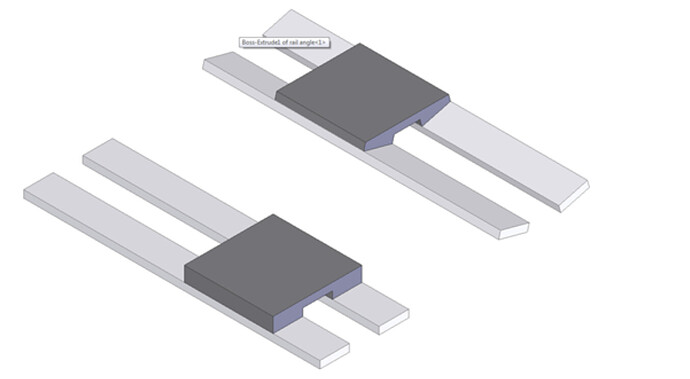Friction occurs because of the interatomic forces at these minute regions of atomic contact. The fraction of the geometric area in atomic contact is proportional to the normal force divided by the geometric area. If the normal force is doubled, the area of atomic contact is doubled and the friction is twice as large. However, if the geometric area is doubled while the normal force remains the same, the fraction of area in atomic contact is halved and the actual area in atomic contact hence the friction force remains constant.
Changing the rails and cart from horizontal to a 15° angle does not affect the sliding friction force between the bronze cart and the steel rails if all other design features are unchanged.
Core Sliding Friction Law
Sliding friction is determined by the normal force (the force perpendicular to the contact surface) and the coefficient of friction between bronze and steel. On an inclined plane, the normal force is reduced compared to a horizontal plane—but because the friction force is given by:
F
friction
μ
F
normal
F
friction
=μF
normal
where
μ
μ is the friction coefficient, and
F
normal
m
g
cos
θ
F
normal
=mgcosθ
for an incline of angle
θ
θ.
Effect of 15° Incline
The normal force decreases as the rail is tilted from horizontal (
cos
(
15
°
)
<
1
cos(15°)<1), so frictional force also decreases proportionally.
If all other physical contact details (load, surface area, material) are unchanged, the only difference is the normal force is smaller for the inclined rails.
Practical Answer
The sliding friction force will be less for the 15° angled design compared to the horizontal design, because the component of gravity pressing the cart into the rails is lower at an angle. The coefficient of friction between bronze and steel does not change, only the effective normal force.
